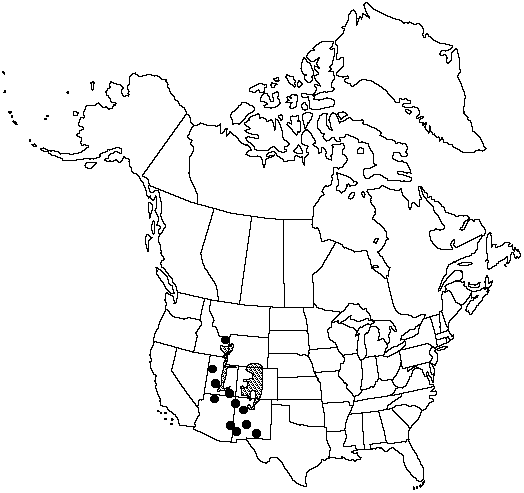Picea pungens
Gard. Chron. n. s. 11: 334. 1879.
Trees to 50m; trunk to 1.5m diam.; crown broadly conic. Bark gray-brown. Branches slightly to strongly drooping; twigs not pendent, stout, yellow-brown, usually glabrous. Buds dark orange-brown, 6–12mm, apex rounded to acute. Leaves 1.6–3cm, 4-angled in cross section, rigid, blue-green, bearing stomates on all surfaces, apex spine-tipped. Seed cones (5–)6–11(–12)cm; scales elliptic to diamond-shaped, widest below middle, 15–22 × 10–15mm, rather stiff, margin at apex erose, apex extending 8–10mm beyond seed-wing impression. 2n =24.
Habitat: Midmontane forests
Elevation: 1800–3000m
Distribution

Ariz., Colo., Idaho, N.Mex., Utah, Wyo.
Discussion
Limited hybridization occurs between Picea pungens and P. engelmannii (R.Daubenmire 1972; R.J. Taylor et al. 1975).
Blue spruce (Picea pungens) is the state tree of Colorado (as Colorado blue spruce) and Utah.
Selected References
None.